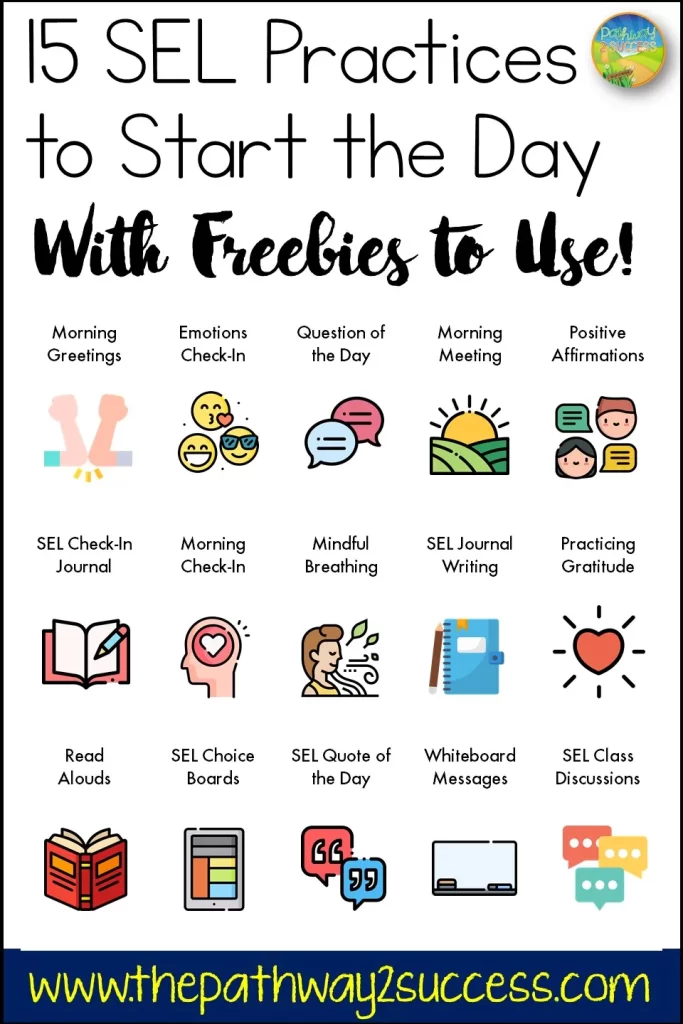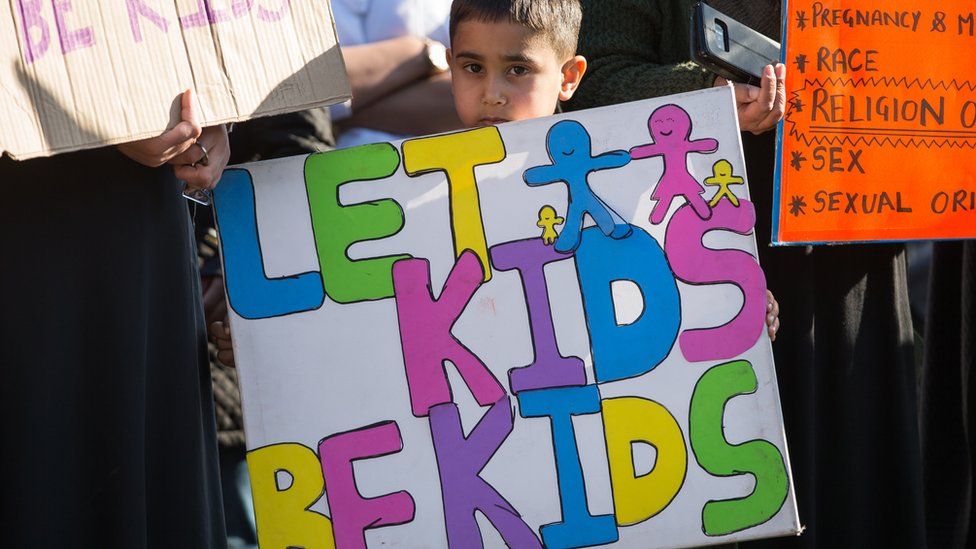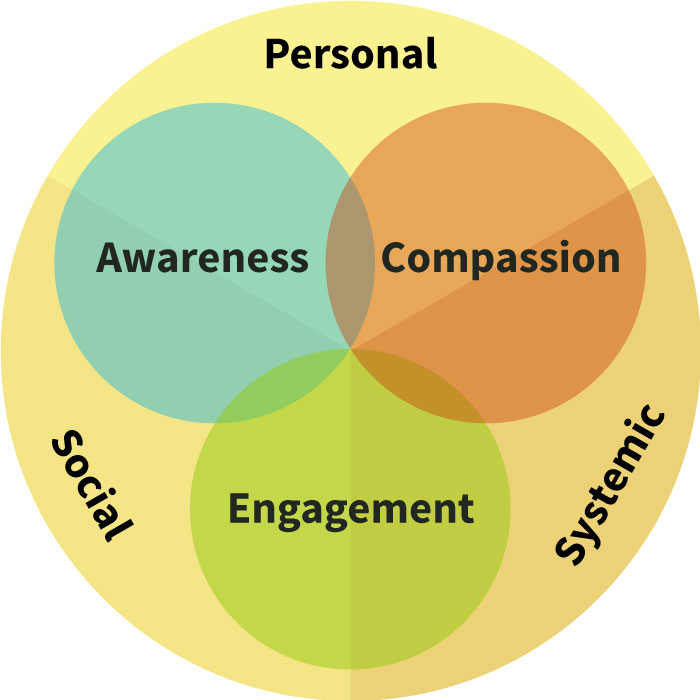Overview of Social Emotional Learning
Social Emotional Learning, otherwise known as SEL, was first introduced into schools in the mid-1990’s. As the name implies, it proports to teaches students social skills and emotional management using grounding techniques, meditation, and spirituality. This concept is known as the “whole child” approach to teaching, first introduced by the famed progressive John Dewey. Teaching social skills through teamwork and collaboration among students has always been integrated into teaching programs, so what is the problem with adding emotions to early childhood education? Helping students understand their emotions is not a bad thing, but the amount of focus that is placed on these techniques is excessive and is instructed by teachers who are not licensed psychologists. SEL often focuses on altering one’s actions based on others’ emotions rather than self-reflection on how to control one’s own emotions.

CASEL
There are various types of SEL implemented throughout the country, a vast majority of which are backed by an organization known as CASEL or the Collaborative for Academic Social and Emotional Learning. CASEL is the go-to authority on all things relating to SEL and coined the term. Virtually all SEL curriculums reference CASEL. Often CASEL is the only sited resource in an SEL curriculum, even those not written by CASEL itself. It highlights five core competencies that students should be able to achieve: self-awareness, self-management, social awareness, relationship skills, and responsible decision making. On its website CASEL states that SEL should be entwined in all classroom curriculum as well as part of the community at large. This is also where “mastery” of a subject has been replaced with “competency” in a subject.
These findings emphasize that spirituality is lived out not only in esoteric or other-worldly spheres but is also embodied and engaged in many psychological processes, and it is embedded and lived out and influenced among persons, communities, and nature.
Spirituality and Meaning-Making Across Contexts | A Study of Spirituality in America (fetzer.org)
CASEL was originally named Collaborative to Advance Social and Emotional Learning. One of the main founders is Dan Goleman, author of the book “Emotional Intelligence” and a disciple of the Dalai Lama (who happens to be an avowed Marxist). Another major contributor to the founding of CASEL is the Fetzer institute which is a new age spiritual foundation founded by John Fetzer with the stated goal of “helping build the spiritual foundation for a loving world.” Along with studying various religious and spiritual organizations, sects and cults around the world, he was an avid devotee of Alice Bailey.
Alice Bailey started the Lucifer Publishing Company, now Lucis Trust, and wrote “Education in the New Age” in the mid 1900’s in which she advocates for using educational institutions to indoctrinate children into the concepts of socialism, usher in a new world order and prepare students to be global citizens. “Our problem is to attain the kind of overall synthesis that Marxism and Neo-Scholasticism provide for their followers, but to get this by the freely chosen cooperative methods that Dewey advocated.” The Fetzer Institute uses its millions of dollars in resources to promote this type of education through SEL throughout the country and Western world.
If this sounds suspiciously like religion and politics in the classroom, that’s because it is. This is why CASEL keeps its origins ambiguous on its website.
How did this get into our schools?
In the late 1960’s Dr. James Comer from Yale instituted an SEL type program in two underachieving inner-city schools. When these two schools performed better than expected, the program was expanded to other schools and districts. CASEL provided a set framework for instituting SEL, and it was adopted by more school districts around the country. Then, the Obama administration passed the Every Student Succeeds Act (ESSA).This bill required competencies in the CASEL 5 and suddenly SEL was virtually mandated in all schools.
Although, there is some evidence that an SEL type program worked in very specific cases, there is no evidence it works across the board. CASEL constantly calls their programs “evidence based”, but that doesn’t mean they have evidence that it works. Every study cited in favor of SEL was conducted by CASEL itself.
Is Milton Teaching SEL?
The MTSD has adopted an SEL curriculum called Social Emotional and Ethical Learning (SEE) which is used in the K-4 classrooms. The first thing that you’ll notice if you look up “SEE curriculum” is that it was developed at Emory University in conjunction with the Dalai Lama as well as other spiritual leaders, yoga gurus and people associated with the Zinn Education Project. Upon reading the curriculum it becomes clear that all references cited are CASEL, the founders of CASEL or Eastern religious spiritual leaders.
The curriculum is laid out in seven chapters, with an eighth chapter being the “capstone project”. The first several chapters are focused on the body, the nervous system, and feelings. There are specific instructions for each lesson complete with dialogue and how long it should take. According to the MES principals these lessons are done every Thursday morning. Some specifics of the curriculum include engaged citizenship (i.e., activism) being a core competency, engaging “mindfulness” (i.e., meditation) throughout the lessons, and several instances of warnings that if not done correctly, the students may react negatively or in ways that the teacher is not equipped to handle. Not only is this curriculum taking time away from traditional academics, but it is asking the teachers, who are not trained therapists, to engage in group therapy, with students who do not need group therapy, in an environment not conducive to group therapy.
It is possible that while exploring sensations of the body with your students, some of them will have difficult experiences that you may not be able to deal with sufficiently on your own, especially if they have suffered or are suffering from trauma.
Social, Emotional & Ethical Learning – Early Elementary School Curriculum by Emory University (Curriculum implemented in Milton Elementary School)
Throughout the early part of the curriculum (taught in grades k-2) students are taught how to ground themselves through mindfulness, techniques for calming themselves, and teachers are constantly instructed to ask students how their bodies feel and what feels good and bad in their bodies. Ostensibly, this is to help them connect their feelings and emotions with physical sensations, but to have an adult constantly asking a child how they feel in their body doesn’t seem appropriate.
As the students get older the curriculum shifts from learning about what is going inside the body to what is going on in the community of the classroom. The students are taught empathy through roll playing games. Through these games and stories told by the teacher the students start making connections about how they affect others and how others affect them. Interdependence, being “in it together” and webs of dependence are all recurring themes throughout these chapters. It is explicit that others’ actions can have a negative or positive affect on a student. Instead of being taught how to take responsibility for their emotional reaction to others’ actions, they are repeatedly taught that, in essence, others should be blamed for how they feel.
Finally, the end of the curriculum, which takes place during 4th grade, is the capstone project. This is what all the rest of the curriculum has been moving towards and preparing the students for over the previous four years. Students are encouraged to pick a problem or a cause that they are interested in. They then spend time promoting this cause together and with the teacher’s help. The curriculum gives examples of hanging posters and making pamphlets as appropriate ways to promote their cause. This is clearly turning students into activists and teaching them how to become “engaged citizens.”

How CRT is being injected?
… in 2020, CASEL infused SEL with CRT-aligned ideology. SEL 1.0, as we could call it, focused on morally neutral student “competencies,” such as “self-awareness” and “selfmanagement.” Back in 2019, it struck me as an unsustainable enterprise: a morality-free attempt at moral education. In 2020, those neutral competencies became value-laden – with values derived from the left-academic ideology popularly known as CRT. CASEL embraced this ideological shift under the name of “Transformative SEL.”
In “Transformative SEL,” “self-awareness” encompasses “identity,” with “identity” defined now through the lens of “intersectionality.” “Self-management” encompasses “agency,” with “agency” defined through “resistance” and “transformative/justice-oriented” citizenship. “Transformative SEL” also embraces “culturally relevant/responsive” pedagogy. This approach was pioneered by Gloria Ladson-Billings, the professor who brought Critical Race Theory to K-12 education.
Whether or not one chooses to call the set of related ideological impulses that CASEL has embraced “Critical Race Theory,” they are clearly not morally or politically neutral.
The Trouble with Social Emotional Learning by Max Aden | American Enterprise Institute (AEI)
In Milton, these lessons aren’t being confined to just the Thursday morning time slot. Because of the nebulous nature of the curriculum, it can be weaved into virtually any other subject that the students are studying. In a school board meeting in 2020, at the height of COVID, several teachers gave a presentation on a series of lectures and workshops that they had attended. These were considered continuing education and paid for by a grant from the Roland Foundation. These lectures and workshops were all about exploring whiteness, how to eradicate it and how to teach these concepts in schools. This subject matter is called Critical Whiteness Studies and is an offshoot of Critical Race Theory. At the end of the presentation the teachers talked about how it is imperative that these subjects be taught at MTSD, and it was discussed how they would be in contact with the SEL director on how to best insert this into the SEL curriculum. Not only are core tenants of Critical Race Theory being taught in our schools, SEL is how it is implemented. Teaching children how to feel about any topic is not appropriate, let alone how to feel about contentious topics that are creating a rift in our society.
Conclusion
Social Emotional Learning curriculum asks teachers to be therapists. It guides students into being activists, not taking responsibility for themselves and confusing them with complex, age-inappropriate content. It is taking precious time away from core academics such as reading, writing, math and science. Because it can be intertwined with all aspects of curriculum and focuses on soft competencies, it is the perfect vehicle to introduce the tenets of other Marxist based ideologies such as Critical Race Theory and Queer Theory (or gender ideology). All of this is a recipe for disaster, and it’s hard not to ask the question; is this why our children are reporting higher levels of anxiety and depression?

0 Comments